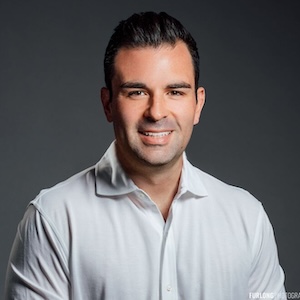
Data-driven curation is redefining programmatic advertising by combining enriched datasets with supply-side innovation, enabling brands to achieve precision targeting, higher efficiency, and more sustainable digital campaigns.
While curation has been a feature of programmatic advertising for some years, the latest evolution — data-driven curation — is redefining how digital advertising functions, with precision and efficiency emerging as the new standards of successful campaigns.
This evolution has led to a number of different definitions in the marketplace. To clarify any confusion, we spoke with Matt Sattel, Chief Revenue Officer at OpenX, to cast light on data-driven curation and how it shapes the programmatic landscape.
Andrew Byrd: How has curation evolved to become data-driven? 
Matt Sattel: Curation initially focused on inventory through site-list activation, which allows brands and agencies to select specific subsets of digital media such as websites, subdomains, or CTV apps that align with their campaign goals. It’s an important tool that helps secure brand-safe inventory, streamline the buying process, and enhance ad relevance.
Now, data-driven curation has emerged as the supply side seeks to serve buyers’ needs better. Data-driven curation enables brands to leverage enriched datasets—including behavioral insights, demographic information, and purchase intent—to reach their desired audiences more effectively. By working closely with SSPs that maintain interoperable identity graphs, advertisers can combine first-party data with second and third-party sources to create highly targeted audience segments that drive engagement and conversion.
While buyers can increase the precision of their targeting, achieve higher ROI, and scale campaigns at a better cost, data-driven curation also has a lot to offer publishers, who see higher CPMs, an increase in bid density, and an increase in win rate for deals curated with OpenX.
AB: How have SSPs like OpenX facilitated this evolution?
MS: Innovation from the supply side has driven the evolution of data-driven curation. SSPs, including OpenX, have been digging further into programmatic and building data-targeting capabilities. By embracing these innovations, brands, and publishers can unlock new scalability, transparency, and effectiveness levels in their digital campaigns. As a result, advertisers can take advantage of increasingly sophisticated targeting and data capabilities.
For example, OpenX offers both pre-built and customized solutions to buyers, meaning they can seamlessly activate their own data or data from one of our 250+ data partners. We’re taking the lead on data, identity, and curation, helping brands achieve their goals across CTV, app, mobile web, and desktop.
AB: What are the benefits of data-driven curation?
MS: One of the key benefits of data-driven curation is the ability to refine targeting and enhance ad relevance. With access to curated data on the supply side, brands can ensure that users who are most likely to respond positively will see their campaigns, reducing wasted impressions and boosting campaign efficiency. This approach improves ROAS and contributes to a more sustainable digital advertising ecosystem by minimizing unnecessary energy consumption associated with irrelevant ad placements.
Moreover, data-driven curation provides valuable insights for strategic planning and decision-making. It offers advertisers a deeper understanding of audience behavior and preferences, enabling more effective messaging and creative strategies. For publishers, it presents an opportunity to enhance the value of their inventory by offering buyers access to high-quality, curated data that improves targeting accuracy and reduces data leakage.
Data-driven curation is also an important tool for DSPs, as they benefit from the higher quality of ad requests sent to them. This enables DSPs to optimize their bidding strategies better, boosting efficiency and improving campaign performance.
AB: Can data-driven curation help advertisers hit sustainability goals?
MS: The short answer is yes. By leveraging precise audience targeting, advertisers can focus their efforts on reaching the right users at the right time, minimizing wasted impressions. This streamlined approach lowers the volume of wasted bids, which, in turn, reduces the computational resources required for ad auctions.
Fewer unnecessary bids mean a significant decrease in energy consumption across programmatic supply chains, contributing to a lower carbon footprint. Additionally, by prioritizing high-quality inventory and leveraging curated data, advertisers can achieve better campaign performance with fewer resources, aligning their marketing strategies with sustainability objectives. Ultimately, data-driven curation improves efficiency and reinforces a commitment to more responsible advertising practices.
AB: How will data-driven curation evolve in the future?
MS: The future of curation will be AI-enabled; brands will use curation tools to identify higher-performing media placements to deliver better outcomes for advertisers and publishers. At OpenX, we’ve been testing a solution that uses machine learning and deep neural networks to prioritize the highest-value inventory to deliver against advertisers’ goals. Requests that the model assesses as highly likely to perform get a deal ID attached in real time, which brands and agencies can activate in their DSP of choice.
To take a practical example, brands operating in competitive sectors that typically have high acquisition costs — such as automotive or consumer tech — will be able to use these AI-enabled tools to reach their audience at scale, even outside subject matter-specific environments. This means they will be able to execute high-performing campaigns in the most cost-effective way.